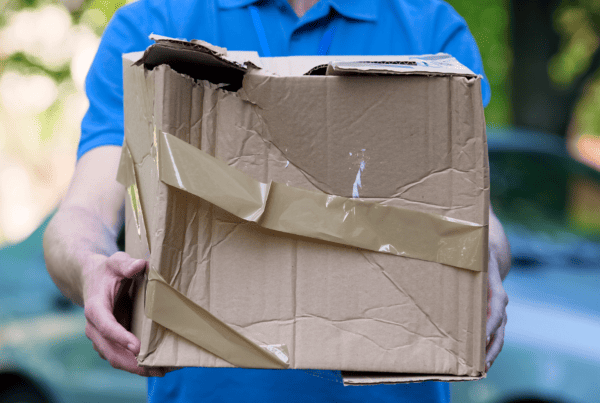Every year, the final months of the year bring a surge in demand for online retailers. From Halloween through to Christmas and New Year’s, customer orders spike, carriers are stretched thin, and logistics teams face their toughest test of the year. This is what we call peak shipping season.
But 2025 is set to look a little different. Peak season is no longer confined to a few weeks in late November and December. It now stretches across months, starting as early as October and lasting until January.
Add to that higher consumer expectations for speed, flexibility, and communication. Suddenly, the challenge becomes clear: merchants need to prepare smarter, earlier, and with the right strategies in place.
This guide gives you everything you need to stay ahead: a forecast of the busiest days of the season, a calendar of key dates and shipping cutoffs, plus practical tactics to keep operations under control and other resources.
What to expect for the holiday peak shipping season 2025
So, what can you expect this year?
- Higher volumes. Every year, parcels continue to increase. With e-commerce booming, carriers are already bracing for record-breaking peaks.
- Surcharges and shipping caps. To manage the load, carriers often introduce peak season surcharges and may even cap the number of parcels they accept. That means merchants without a plan B risk delays or missed sales.
- A longer season. Peak season is no longer just Black Friday to Christmas. October promos, Singles’ Day, Cyber Monday, and even January’s Winter Sales now shape a much longer shopping timeline.
The Peak Season Index 2025
Peak 2025 is set to break records again, with Cyber Monday leading the charge as the busiest shipping day of the year. On this day alone, parcel volumes are expected to surge over 200% above the daily average.
Because Cyber Monday lands in December, online retailers should prepare for December to be the most demanding month for shipping. Delivery networks will be stretched, and average delivery times could rise by 2 days.
Heads-up: Distribution centers and logistics providers also adjust their working hours and operations to keep up. To stay ahead, monitor guaranteed delivery cut-off dates from your carriers and adjust your planning accordingly.
Why preparation matters more than ever
With more shipments in motion, the risks rise. During Black Friday and Cyber Monday 2024:
- Parcel losses rose by 20%.
- Damaged parcels increased by 34%.
- The Netherlands experienced a spike in parcel losses of more than 40%.
- France recorded a 37% jump in damages during Cyber Monday.
However, with the right prep, you can keep these numbers from turning into headaches. Stay informed, build flexibility into your operations, and lean on data to plan smarter.
When is peak shipping season for your business?
The peak shipping season may vary depending on the industry and the specific market you cater to.
In general, for toys, electronics, as well as fashion, the peak shipping season starts with Singles Day in November, followed by Black Friday and Cyber Monday. This bustling period continues until the Christmas holiday season.
For some businesses, even Halloween at the end of October can already show increased sales volumes. For others, like home and gardening, peak season may start in February and last until April, or May.
Whichever industry you are in, your business can greatly profit from knowing your peak sales season and preparing for it.
This means stocking up on your inventory in time, considering employee capacity, and making sure you have sufficient packaging material available from the start that will last until the end.
But wait, there’s more. Peak periods often coincide with a surge in returns.
Calendar & shipping cutoff deadlines 2025
A big part of preparation is knowing the cutoff dates. These are the latest possible days customers can place orders to receive their packages on time.
Carrier cut-offs for 2025 haven’t been published yet, but last year’s deadlines give us a solid starting point to plan ahead.
📅 Shipping deadlines calendar (based on 2024 reference data)
| Event | Carrier cutoff (example 2024) | Safe order-by date (recommended) |
| Halloween (Oct 31) | Oct 27 | Oct 25 |
| Singles’ Day (Nov 11) | Nov 7 | Nov 5 |
| Black Friday (Nov 28) | Nov 25 | Nov 23 |
| Cyber Monday (Dec 1) | Nov 28 | Nov 26 |
| Christmas (Dec 25) | Dec 20 | Dec 18 |
| New Year’s (Jan 1) | Dec 27 | Dec 24 |
💡 Pro tip: Set your internal order deadline 2–3 days earlier than the carrier’s. This buffer helps you avoid missed deliveries, unhappy customers, and a wave of post-holiday returns.
10 Peak shipping season tips for your e-commerce
When sales spike, carriers face intense pressure, and that creates challenges for you. Overloaded networks, surcharges, shipping caps, and a rise in lost or damaged parcels can quickly spiral.
When you feel like you’ve lost control amid the chaos, it’s prime time to take charge of your shipping process.
1. Connect with multiple carriers and service points
Connecting with multiple carriers and service points offers greater flexibility for you and your customers, from delivery to possible returns. For your business, that eventually translates into both a higher conversion rate and customer retention.
Having the ability to choose a different carrier also helps navigate around the following issues:
- A carrier that maxes out on capacity suddenly stops accepting new pickup requests.
- Closing times during holidays, or no pickups on certain days, depending on the carrier.
- Added peak season shipping surcharges, which can vary from carrier to carrier.
Adding service point delivery into your checkout offers even more control. Carriers often skip home delivery attempts during peak periods, leading to extra fees or failed deliveries. With service points, your customers can choose a time and place that works for them—and you benefit from fewer failed deliveries and lower costs.
It also impacts your bottom line: more flexible delivery options can boost conversion rates and improve customer retention.
💡Pro tip: Add service points to your checkout to let customers choose delivery that works for them, especially when home delivery becomes unreliable.
2. Navigate peak season shipping surcharges
During peak season, most carriers apply extra fees to offset the costs of handling higher volumes, such as additional staffing, extended delivery hours, and network strain. These charges come on top of regular surcharges and can vary widely between carriers.
If you’re budgeting for peak or calculating your shipping margins, don’t overlook these added costs. Knowing what to expect helps you stay profitable and avoid surprises, especially if you’re scaling up marketing or promotions during this time.
💡Pro tip: Ask your carriers about expected surcharges in advance and adjust your pricing strategy or shipping options accordingly.
3. Be clear about shipping deadlines
Holiday deliveries can get messy. Carriers are overwhelmed, delays are common, and customers just want to know: “Will it arrive on time?”
That’s why being upfront about your shipping cut-off dates is so important. Clear communication helps manage expectations and builds trust, while also encouraging customers to shop early.
Share your delivery schedule on your website, in your emails, and across social media. It creates urgency, drives earlier purchases, and reduces last-minute complaints.
💡 Pro tip: Add a shipping disclaimer in your order confirmation emails during peak season. A simple note about possible delays shows you care and keeps customer satisfaction high, even when carriers fall behind.
4. Process your orders faster with shipping automation
During peak season, managing a flood of orders can be overwhelming. Shipping automation takes the pressure off by reducing manual work, cutting errors, and helping your team stay efficient when demand is at its highest.
Think of generating bulk shipping labels in a few clicks, automating picking and packing processes in your warehouse, and reducing employee workload when they are at their busiest. With automation in place, you’ll see fewer mistakes, faster fulfillment, and happier customers.
Automation also makes it easier to scale your operations without sacrificing quality. Once set up, it keeps working in the background, saving time, reducing costs, and keeping your deliveries on track, even during the busiest weeks of the year.
💡Pro tip: Set up smart shipping rules in advance to automatically choose the best carrier, delivery method, or insurance option for every order.
6. Insurance and other measures for shipment protection
When things get hectic, even the best logistics setups can hit bumps. Lost, damaged, or stolen parcels happen. That’s where shipment protection comes in. It’s a small investment that keeps your business covered, your customers happy, and your reputation intact.
Partnering with the right insurance provider gives you a faster, more reliable claims process, so you can replace orders quickly and maintain customer trust. Standard carrier insurance can take up to 28 days to process a claim, while dedicated shipment protection can deliver payouts in as little as 2–3 days.
💡 Pro tip: Look for fast claims processing and clear coverage terms when choosing a protection provider. The right partner can make all the difference during peak season.
7. Increase customer trust with tracking notifications
When parcels are delayed, silence is your biggest enemy. Keeping customers informed is key to maintaining trust, especially during the holiday rush.
Set up automatic tracking emails and SMS notifications so shoppers can follow their parcels every step of the way. It’s a simple move that increases transparency, reduces Where Is My Order? (WISMO) requests, and improves the overall delivery experience.
With timely updates, customers know exactly when to expect their delivery and can plan accordingly. That sense of control turns a potential frustration into confidence in your brand.
💡 Pro tip: Customize your tracking page with your logo, colors, and seasonal messaging. Branded tracking turns routine updates into a chance to reassure, delight, and drive repeat sales.
8. Monitor performance in real time
When delays hit, every minute counts. That’s why visibility is everything.
During peak season, Shipping Intelligence gives you the data you need to stay in control. With real-time analytics on carrier performance, shipping costs, and delivery exceptions, you can spot bottlenecks before they turn into customer complaints.
By comparing performance across carriers and time ranges, you can make smarter routing decisions, protect your margins, and keep your delivery promises, even during periods of high volumes.
🚀 Sendcloud in action: Shipping Intelligence turns chaos into clarity, helping retailers stay ahead of disruptions and keep peak season running smoothly.
9. Simplify returns with a self-service portal
Peak season doesn’t end when the gifts are delivered. It ends when the returns are handled. Managing returns efficiently is just as important as shipping them out.
Update your return policy for the holidays to give customers extra time to send back items. It’s a small gesture that builds trust and keeps satisfaction high. After all, no one wants to deal with returning an awkward gift while the giver is still in the room.
A self-service return portal makes returns easy for everyone. Customers can select the items they want to return, choose a refund method, and drop them off at a service point or with a carrier.
Sharing return options early in the checkout or order confirmation gives shoppers confidence before they even buy. And with automation in place, your support team spends less time on manual tasks and more time helping customers who really need it.
💡 Pro tip: Automate your return rules to speed up processing, cut down on customer support requests, and deliver a smoother post-purchase experience.
10. Manage support load with Support Automation
The holidays bring more than sales, they bring a flood of questions and refund requests. Without a plan, your support inbox fills up fast, leaving teams overwhelmed and customers waiting.
When peak season chaos hits, Support Automation keeps your customer service running smoothly. It brings all carrier communication together in one place, giving your team a clear overview of every delivery issue, claim, or refund request, without drowning in carrier emails or switching between systems.
🚀Sendcloud in action: Merchants like Travelbags and ICON Amsterdam have reduced delivery-related support tickets by up to 46% using Support Automation, turning reactive customer service into a proactive advantage during the busiest months of the year.
How Sendcloud helps you own peak season: Friandries success story
The Belgian chocolatier Friandries faced the same challenge many online retailers know all too well: scaling during peak season without compromising on customer experience.
Specializing in handcrafted chocolates, Friandries experiences major order spikes around Christmas, Valentine’s Day, and Mother’s Day, when demand (and expectations) are at their highest.
With Sendcloud’s multi-carrier setup and branded tracking, Friandries eliminated shipping bottlenecks, reduced support tickets, and kept their deliveries on schedule. The results speak for themselves: 500+ orders per day, faster delivery times, and loyal customers who keep coming back, even during the busiest weeks of the year.
Want to see how they did it? Read the full Friandries success story and discover how Sendcloud helps growing brands deliver sweet experiences.
Conclusion: turn peak into opportunity
Peak shipping season 2025 is longer, tougher, and more competitive than ever before. Order volumes are rising, customers are expecting more transparency, and carriers are under increasing strain. For you, this can feel overwhelming.
But here’s the good news: with the right preparation, peak doesn’t have to mean panic. By setting realistic cutoff deadlines, diversifying your carriers, keeping customers informed, and staying on top of returns and real-time performance, you can turn potential challenges into a growth opportunity.
Merchants who invest in smarter shipping strategies and tools today will not only survive the holiday rush but also build the kind of customer trust and loyalty that lasts well beyond January.
Visit our Peak Season Content Hub for even more insights, practical guides, and expert tips. With the right setup, peak 2025 isn’t something to fear but your biggest chance to thrive.
Frequently asked questions about peak shipping season
What does “peak season” mean in e-commerce?
In e-commerce, peak season is the busiest time of the year for online orders and shipments. It usually starts in late October and lasts through January, covering major shopping events like Singles’ Day, Black Friday, Cyber Monday, and Christmas.
For retailers, it’s a season of high sales and high pressure, where success depends on smart planning and reliable shipping operations.
What are typical holiday shipping cut-off dates?
Cut-off dates are the last days customers can order and still get their packages on time for holidays like Christmas.
Most carriers set their Christmas cut-offs around December 20, but it’s smart to set your internal deadlines 2–3 days earlier to account for delays or capacity limits.
🗓️ Pro tip: Check the 2025 shipping calendar above for carrier cut-off examples and safe “order-by” recommendations.
How do I reduce shipping delays during Black Friday/Cyber Monday?
There’s no silver bullet to eliminate delays, but you can minimize the impact with the right strategy. Start early with a multi-carrier setup, automate key workflows, and clearly communicate delivery windows at checkout. If delays do happen, send proactive tracking updates to manage expectations and keep customers informed.
For more practical advice, check out our blog on handling shipping delays.
How should I handle returns during the holidays?
Keep returns simple and stress-free. A self-service return portal lets customers start their own returns, choose between a refund or exchange, and track every step of the process.
Also consider extending your return policy until mid-January—it builds trust and encourages more confident purchases during the gift-giving season.















